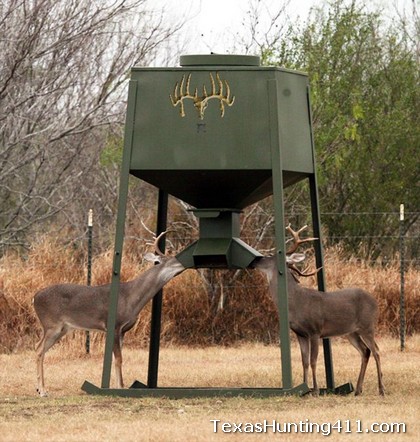Many people to produce bigger bucks and shoot them, too. The increase in commercial whitetail deer breeding facilities, combined with supplemental feeding, have allowed managers to produce bucks of massive proportions on properties where habitat is relatively poor. In my opinion, there is a huge difference between growing big deer in a pen system and producing big deer in a pasture. Let me also state that neither method is wrong. But when it comes down to deer habitat management, there is even more pressure on those landowners managing the deer herd found on their property to do what they can for native plant communities.

The following article was written by Evan McCoy with Texas Parks & Wildlife Department and was published in “The Cedar Post” April 2013.
“On our WMA’s we regularly give programs stressing the importance of maintaining a proper number of deer in order to maintain a healthy habitat. Not only does it make for a better home for deer, but good range conditions also helps attract a multitude of other wildlife species as well. In my experience though, it seems that most landowners deny that they are overpopulated. One argument they give to support this claim is that their deer are fat and healthy. The feeding of deer keeps them fat. In their minds, if the deer are doing well then that means everything must be optimal. Years ago, it was understood that you had to have good range in order to produce good deer. These days, deer health is not always a good indicator of habitat health. I have witnessed several examples where good deer were produced on poor range.
This phenomenon is due, in part, to the fact that almost everyone has some type of supplemental feeding program and many of them are quite intense. I have no big issue with supplemental feeding, as long as it is done properly. It can often be very beneficial to a deer management program by helping to improve body condition, fawn production and antler growth. The problem is that some ranches will continue to artificially support an overabundance of deer to the point where they are simply feeding deer rather than supplementing their diet. Just look at the extreme scenario of a pen raised deer herd. Those deer are fatter and heavier than most wild deer you will find, but native habitat and forage is usually non-existent inside those pens, and they are totally reliant on pelleted feed. Managers should know that deer will definitely make supplemental feed a part of their diet, but not to the exclusion of natural forage.
Deer like variety, and they have a desire for native plants. This is evident in high rainfall years when quality forage is more abundant and, as a result, we find that supplemental feed consumption goes down. Another example is the sudden early season disappearance of deer when acorns hit the ground. If desirable vegetation is present, deer will often prefer that over artificial feed. If the deer population exceeds the natural supply of plants then deer will increase their supplemental feed use to get the nutrition they need. As the population continues to grow, so will the feed bill, since forage becomes scarce and deer are forced to rely more on feeders. Therefore, as you can see, deer health can be maintained at the same time habitat health declines.
The question you should ask yourself is, “If you eliminated your supplemental feeding program then would your land still support your current deer herd?” You may suddenly see the relationship between habitat quality and deer quality. Would they be stuck eating juniper and persimmon or is there plenty of oak and hackberry within a deer’s reach? By decreasing the deer population you will be increasing the amount of forage to go around and your deer will rely less on handouts. You want to be sure that feed is a supplement to their natural diet and not the other way around. To truly determine if your ranch is overpopulated, it may be best to take a closer look at the condition of your land, rather than the condition of your deer.”
What do you think about the “supplemental” feeding of whitetail deer?